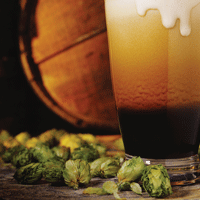Whether stocking domestics or imports, the same premise remains: choose your beers wisely
Thinking of revamping your beer list? There’s a lot to consider — import or domestic, premium versus craft, bottle or draft, and that’s just to get started. But maybe most important in this process is understanding that the Canadian consumer is more sophisticated than ever.
“If we go back 50 years, there were only five major brewers in Canada,” says Roger Mittag, a Toronto-based beer educator. Mittag believes that once people got tired of the offerings from Canadian brewers, they moved on to something they viewed as having a higher-quality image. Large numbers of brand-loyal European immigrants added to that swing and over the past 15 years the global view on beer grew steadily. Today, with consolidation the driving force in big business, big brands like Stella Artois, Heineken and Hoegaarden are much more prominent in the Canadian marketplace. But Mittag says there’s another reason for the shift to imports. “People buy import beers, not necessarily because they taste better or they’re made better, but because they provide the drinker with a more prestigious image.”
Nevertheless, while growth in the import beer category over the past decade has been staggering — enough to make Stella the number 1 draft beer in Canada — new, high-quality craft beers are helping domestic brewers claw back some of that market share. “It’s changing as we speak,” Mittag says. “Last year, statistics showed imports actually dropped for the first time in the past 10-plus years. It wasn’t significant, but they did drop. Growth in premium domestic products took its place. What we’re seeing is a big emphasis on buying local. It’s happening with food and it’s happening with beer.”
It goes without saying that if you have a regional menu, your beer list should follow suit. Consumers are educated and they want to experiment with new, Canadian-made, local-to-the-area beers, as well as try unique imports. And don’t forget to build a story around your beer menu and sell it to customers, too. “There has to be some kind of anecdote, history or culture behind it,” says Mittag. “That’s what makes all beer drinkers a bit more interested.”
So, import or domestic — what should your new beer list offer? “For me, it’s about the portfolio of beers and not necessarily whether they’re imports or domestics,” Mittag cautions. “I want to fill a variety of styles. If I have 10 brands, I’m not stocking eight lagers. I’m going to open it up and I’ll have two or three imports. Generally, if 30 per cent of your brands are imports, that should suffice. The rest I’ll spread around domestically, looking for small, unique beers.” And because those beers are local, they’ll be fresher and taste better.
But stocking the right beers is only half the equation; Mittag believes that employee education is equally critical. It’s often what separates good restaurants from great ones. “People are craving information. They’ve been fed with info about wine, but beer is the dominant beverage in Canada. People want to know a lot more about it.’’




















